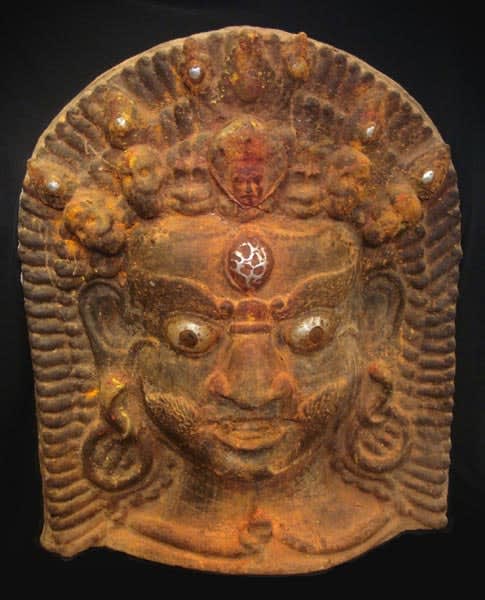Nepalese Wooden Bhairava Mask, 1500 CE - 1700 CE
Wood
24.25 x 28.75
AM.0173
Further images
This imposing wooden carving represents the head of Bhairava, one of the most important deities of Nepal. Venerated in both Hinduism and Buddhism, the god is valued for his fearsome...
This imposing wooden carving represents the head of Bhairava, one of the most important deities of Nepal. Venerated in both Hinduism and Buddhism, the god is valued for his fearsome appearance and ability to ward off evil. According to one tradition Bhairava is a manifestation of Shiva, created to punish Brahma during a dispute between the two deities. The mask has three bulging eyes inlaid with a silver-coloured metal. The ferocity of the expression is increased by the use of broad eyebrows, wide nose and thick moustache. The mouth is ajar with the teeth visible as was customary in representations of this god. The headdress is adorned with skulls and in the centre is the head of Shiva in his peaceful form. Bhairava is traditionally associated with snakes (nagas) and this work is no exception. The large coiled earrings are in fact serpents and these creatures are also intertwined beneath the neck. The entire sculpture is covered with red pigment, a ritual powder that reminds us that this object was the focus of worship for many years. Bhairava is still honoured today, particularly in Kathmandu where he is regarded as the guardian of the city. His image is paraded through the streets during the festival of Indra-Jahra. This magnificent sculpture is a manifestation of piety that is still very much alive.





